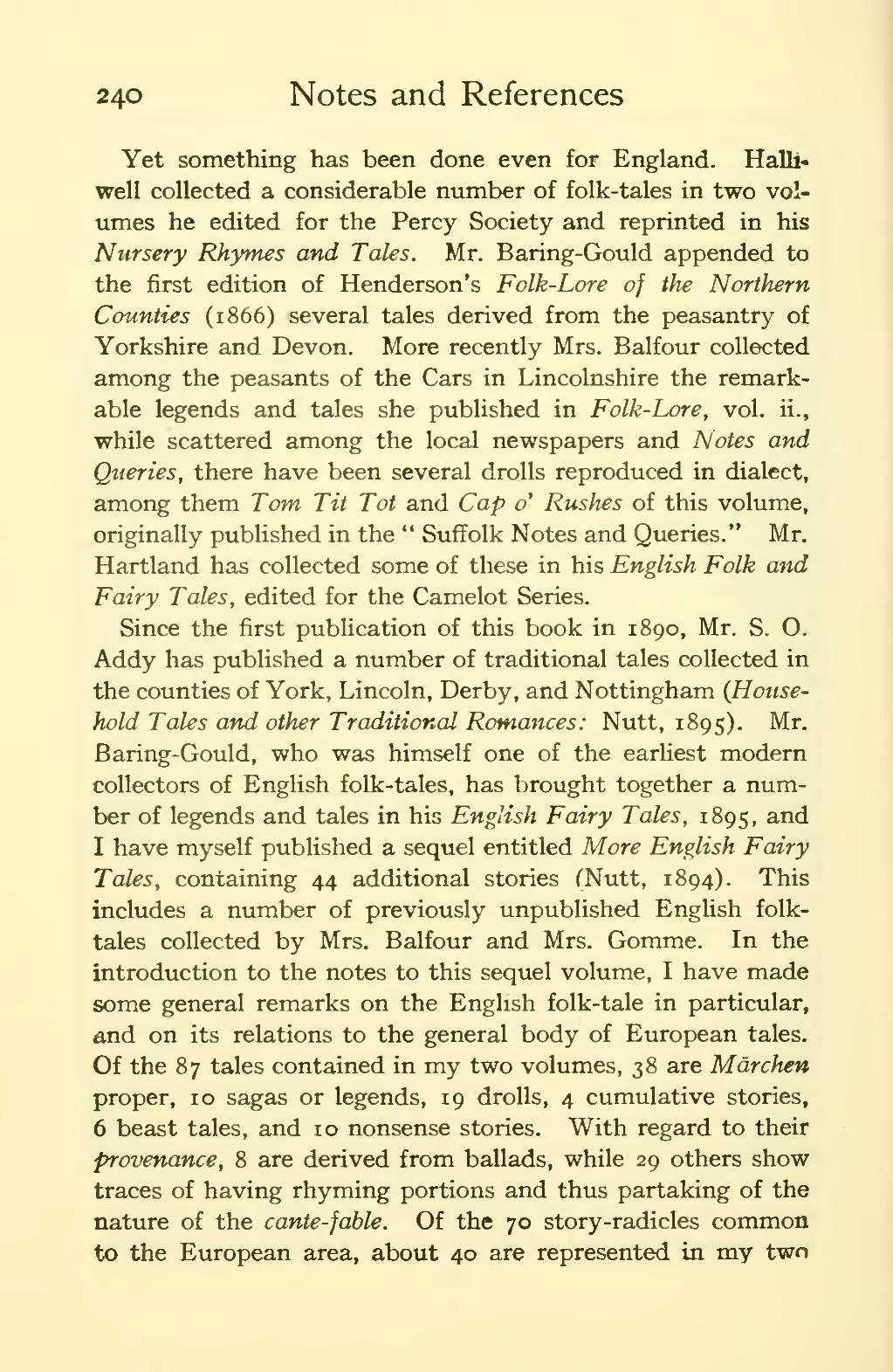Yet something has been done even for England. Halliwell collected a considerable number of folk-tales in two volumes he edited for the Percy Society and reprinted in his Nursery Rhymes and Tales. Mr. Baring-Gould appended to the first edition of Henderson's Folk-Lore of the Northern Counties (1866) several tales derived from the peasantry of Yorkshire and Devon. More recently Mrs. Balfour collected among the peasants of the Cars in Lincolnshire the remarkable legends and tales she published in Folk-Lore, vol. ii., while scattered among the local newspapers and Notes and Queries, there have been several drolls reproduced in dialect, among them Tom Tit Tot and Cap o' Rushes of this volume, originally published in the "Suffolk Notes and Queries." Mr. Hartland has collected some of these in his English Folk and Fairy Tales, edited for the Camelot Series.
Since the first publication of this book in 1890, Mr. S. O. Addy has published a number of traditional tales collected in the counties of York, Lincoln, Derby, and Nottingham (Household Tales and other Traditional Romances: Nutt, 1895). Mr. Baring-Gould, who was himself one of the earliest modern collectors of English folk-tales, has brought together a number of legends and tales in his English Fairy Tales, 1895, and I have myself published a sequel entitled More English Fairy Tales, containing 44 additional stories (Nutt, 1894). This includes a number of previously unpublished English folktales collected by Mrs. Balfour and Mrs. Gomme. In the introduction to the notes to this sequel volume, I have made some general remarks on the English folk-tale in particular, and on its relations to the general body of European tales. Of the 87 tales contained in my two volumes, 38 are Märchen proper, 10 sagas or legends, 19 drolls, 4 cumulative stories, 6 beast tales, and 10 nonsense stories. With regard to their provenance, 8 are derived from ballads, while 29 others show traces of having rhyming portions and thus partaking of the nature of the cante-fable. Of the 70 story-radicles common to the European area, about 40 are represented in my two
